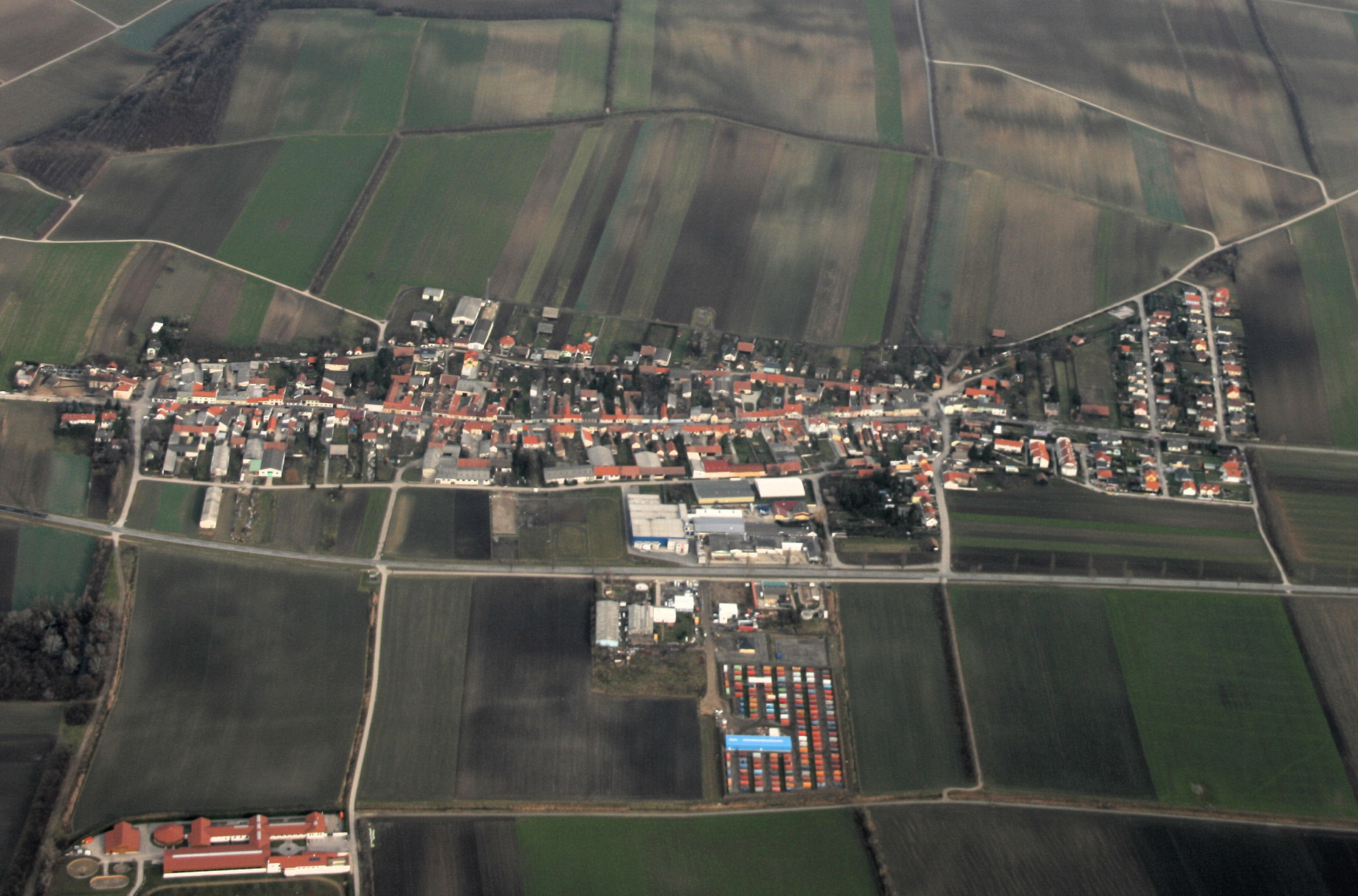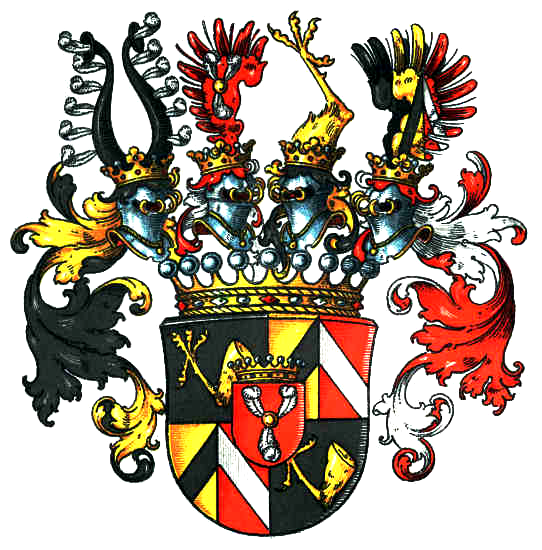|
Rohrau, Austria
Rohrau (german: Marktgemeinde Rohrau) is a village in the state of Lower Austria. The name comes from two German words: ''Rohr'' (reed) and ''Au'' (riparian forest). South of the village is a riparian forest and a swamp covered with reed. Rohrau is located in the "industrial quarter" (''Industrieviertel'') of Lower Austria. Its area is 20.50 km2, of which 8.38% is forested.Statistical data There is a kindergarten and a primary school (''Volksschule''). Subdivisions Rohrau is subdivided into the following ''n'': *Rohrau *Gerhaus *Hollern *PachfurthHistory The area in pre-Roman times belonged to the Celtic kingdom of |
Bruck An Der Leitha (district)
Bezirk Bruck an der Leitha ( bar, label=Central Bavarian, Bruck aun da Leitha) is a district of the state of Lower Austria in Austria. Municipalities Towns () are indicated in boldface; market towns (''Marktgemeinden'') in ''italics''; suburbs, hamlets and other subdivisions of a municipality are indicated by lower dots. * Au am Leithaberge * Bad Deutsch-Altenburg * Berg * Bruck an der Leitha ** Bruck an der Leitha, Wilfleinsdorf, Schloss Prugg * Ebergassing ** Ebergassing, Wienerherberg * Enzersdorf an der Fischa ** Enzersdorf an der Fischa, Margarethen am Moos * Fischamend ** Fischamend-Dorf, Fischamend-Markt * Göttlesbrunn-Arbesthal ** Arbesthal, Göttlesbrunn * Götzendorf an der Leitha ** Götzendorf an der Leitha, Pischelsdorf * Gramatneusiedl * Hainburg an der Donau * Haslau-Maria Ellend ** Haslau an der Donau, Maria Ellend * Himberg ** Himberg, Velm, Pellendorf, Gutenhof * Hof am Leithaberge * Höflein * Hundsheim * Klein-Neusiedl * Lanzendorf * Leopold ... [...More Info...] [...Related Items...] OR: [Wikipedia] [Google] [Baidu] |
Noricum
Noricum () is the Latin name for the Celtic kingdom or federation of tribes that included most of modern Austria and part of Slovenia. In the first century AD, it became a province of the Roman Empire. Its borders were the Danube to the north, Raetia and Vindelici to the west, Pannonia to the east and south-east, and Italia ( Venetia et Histria) to the south. The kingdom was founded around 400 BC, and had its capital at the royal residence at Virunum on the Magdalensberg. Area and population Around 800 BC, the region was inhabited mostly by the people of the local Celtic Hallstatt culture. Around 450 BC, they merged with the people of the other core Celtic areas in the south-western regions of Germany and eastern France. The country is mountainous and rich in iron and salt. It supplied material for the manufacturing of arms in Pannonia, Moesia, and northern Italy. The famous Noric steel was largely used in the making of Roman weapons (e.g. Horace, ''Odes'', i.16.9-10: ... [...More Info...] [...Related Items...] OR: [Wikipedia] [Google] [Baidu] |
Market Town
A market town is a Human settlement, settlement most common in Europe that obtained by custom or royal charter, in the Middle Ages, a market right, which allowed it to host a regular marketplace, market; this distinguished it from a village or city. In Britain, small rural towns with a hinterland of villages are still commonly called market towns, as sometimes reflected in their names (e.g. Downham Market, Market Rasen, or Market Drayton). Modern markets are often in special halls, but this is a recent development, and the rise of permanent retail establishments has reduced the need for periodic markets. Historically the markets were open-air, held in what is usually called (regardless of its actual shape) the market square (or "Market Place" etc), and centred on a market cross (mercat cross in Scotland). They were and are typically open one or two days a week. History The primary purpose of a market town is the provision of goods and services to the surrounding locality. Al ... [...More Info...] [...Related Items...] OR: [Wikipedia] [Google] [Baidu] |
Harrach
The House of Harrach is an old and influential Bohemian and Austro-German noble family. The ''Grafen'' (Counts) of Harrach were among the most prominent families in the Habsburg Empire. As one of few mediatized families, it belongs to high nobility. History The family first appeared in 1195 in the documents found in Ranshofen Abbey, Duchy of Bavaria. There are two main family branches — Rohrau branch in Austria (until 1886) and Jilemnice branch in Bohemia. They were formed from two sons of Count Karl von Harrach (1570–1628). Two branches were later founded by grandsons of Friedrich August von Harrach-Rohrau — Ernest Christopher Joseph (d. 1838) and Ferdinand Joseph (d. 1841). * 1195 — first mentions of the family in Ranshofen monastery. * 14th century — owned lands in Austria, Carinthia and Styria. * 1524 — Leonhard III von Harrach acquired Rohrau Castle. * 4 January 1552 — Leonhard IV von Harrach (d. 1590) received the title of Imperial Baron from Charles V, ... [...More Info...] [...Related Items...] OR: [Wikipedia] [Google] [Baidu] |
Schloss Rohrau
Schloss Rohrau is a castle in the town of Rohrau in Lower Austria, bordering on Burgenland. The building houses the art collection of the counts of Harrach. Medieval castle and "Herrschaft" or dominion In the 12th century, the Marquis of Cham and Vohburg held the area around Rohrau. Dietrich de Rorow was first mentioned in 1240 as living in the Haus Liechtenstein. His line died out in 1278 with Dietrich III. His daughter Diemut married Leutold I von Stadeck († 1292/95). After the death of the last Johann Stadeck in 1399, Duke Wilhelm wanted to give it to his brother Ernst dem Eisernen, but heiress Guta married Hermann II, Count of Celje and received it from King Wenceslaus IV of Bohemia as a gift. In 1402, Rohrau came into the hands of Ulrich, son of Hugo von Montfort-Pfannberg, who inherited from Guta. In 1404, King Ruprecht gave the Montforts the castle and dominion, which they owned for 120 years. Harrach family The Harrach family first appeared in southern ... [...More Info...] [...Related Items...] OR: [Wikipedia] [Google] [Baidu] |
Joseph II, Holy Roman Emperor
Joseph II (German: Josef Benedikt Anton Michael Adam; English: ''Joseph Benedict Anthony Michael Adam''; 13 March 1741 – 20 February 1790) was Holy Roman Emperor from August 1765 and sole ruler of the Habsburg lands from November 29, 1780 until his death. He was the eldest son of Empress Maria Theresa and her husband, Emperor Francis I, and the brother of Marie Antoinette, Maria Carolina of Austria and Maria Amalia, Duchess of Parma. He was thus the first ruler in the Austrian dominions of the union of the Houses of Habsburg and Lorraine, styled Habsburg-Lorraine. Joseph was a proponent of enlightened absolutism; however, his commitment to secularizing, liberalizing and modernizing reforms resulted in significant opposition, which resulted in failure to fully implement his programs. Meanwhile, despite making some territorial gains, his reckless foreign policy badly isolated Austria. He has been ranked with Catherine the Great of Russia and Frederick the Great of Prussia ... [...More Info...] [...Related Items...] OR: [Wikipedia] [Google] [Baidu] |
Rohrau - Schloss Harrach (2)
Rohrau may refer to: * Rohrau, Austria, a town in Lower Austria * Rohrau (Gärtringen), a village in the municipality of Gärtringen Gärtringen is a municipality in the district of Böblingen, Baden-Württemberg, Germany. It is situated 25 km southwest of Stuttgart and consists of the villages Rohrau and Gärtringen. Notable residents * Friedrich Sieburg (1893–1964 ..., Baden-Württemberg See also * Count Friedrich August von Harrach-Rohrau {{geodis ... [...More Info...] [...Related Items...] OR: [Wikipedia] [Google] [Baidu] |
Bruck An Der Leitha
Bruck an der Leitha ( bar, label=Central Bavarian, Bruck aun da Leitha; "Bridge on the Leitha") is a town in the state of Lower Austria of Austria on the border of Burgenland, marked by the Leitha river. In 2018 it had a population of around 8,000. History In and around Bruck parts of neolithic tools were found, which makes it likely that there was a settlement there at that time. In Roman time, there was the crossing of two major roads, one of them being the Amber Road, the other a link to the Via Militaris. The important Roman army camp Carnuntum was located only ten miles northeast of Bruck at the Amber Road. In Bruck a Roman fortification is said to have been at the place of " Schloss Prugg" (castle of Duke Harrach), of which one part still is named "Roman Tower" (though being built in the Middle Ages). After the end of the Roman Empire, the first traces of new settlement date from around 900. Graves from this time show Hungarian and later Francian/Bavarian influence. In 1 ... [...More Info...] [...Related Items...] OR: [Wikipedia] [Google] [Baidu] |
Leitha River
The Leitha (; or , formerly ; Czech and sk, Litava) is a river in Austria and Hungary, a right tributary of the Danube. It is long ( including its source river Schwarza). Its basin area is . Etymology The ''Lithaha'' River in the Carolingian Avar March was first mentioned in an 833 deed issued by Louis the German, son of the Carolingian emperor Louis the Pious and ruler over the stem duchy of Bavaria. The Old High German name ''lît'' probably referred to a Pannonian ( Illyrian) denotation for "mud", as maintained in the former Hungarian name ''Sár'' (cf. ''mocsár:'' swamp). Course The Leitha rises in Lower Austria at the confluence of its two headstreams, the Schwarza, discharging the Schneeberg, Rax and Schneealpe ranges of the Northern Limestone Alps, and the Pitten. Between Ebenfurth and Leithaprodersdorf, and between Bruck an der Leitha and Gattendorf, the Leitha forms part of the border between the Austrian states of Lower Austria and Burgenland. East of Nic ... [...More Info...] [...Related Items...] OR: [Wikipedia] [Google] [Baidu] |
Petronell-Carnuntum
Petronell-Carnuntum is a community of Bruck an der Leitha in Austria. It is known for its annual World Theatre Festival. History The village derives the second half of its name, Carnuntum, from the ancient Roman legionary fortress and headquarters of the Pannonian fleet from 50 AD, and later a large city of 50,000 inhabitants. There is a 2000-year-old amphitheatre, which was built outside the city walls around the end of the 2nd century AD. The arena was originally surrounded by stadium seating for 13,000 spectators. There was an hexagonal basin speculated to be a baptismal font built in the 4th century AD, by which time the amphitheatre's usage had changed. Geography Petronell-Carnuntum lies in the Industrieviertel area of Lower Austria. About 26 percent of the municipality is forested. It lies on the right bank of the Danube, southwest of Hainburg an der Donau. Culture The World Theatre Festival Carnumtum (german: Art Carnuntum Welttheater Festival) is held each year ... [...More Info...] [...Related Items...] OR: [Wikipedia] [Google] [Baidu] |
Castra
In the Roman Republic and the Roman Empire, the Latin word ''castrum'', plural ''castra'', was a military-related term. In Latin usage, the singular form ''castrum'' meant 'fort', while the plural form ''castra'' meant 'camp'. The singular and plural forms could refer in Latin to either a building or plot of land, used as a fortified military base.. Included is a discussion about the typologies of Roman fortifications. In English usage, ''castrum'' commonly translates to "Roman fort", "Roman camp" and "Roman fortress". However, scholastic convention tends to translate ''castrum'' as "fort", "camp", "marching camp" or "fortress". Romans used the term ''castrum'' for different sizes of camps – including large legionary fortresses, smaller forts for cohorts or for auxiliary forces, temporary encampments, and "marching" forts. The diminutive form ''castellum'' was used for fortlets, typically occupied by a detachment of a cohort or a ''centuria''. For a list of known cast ... [...More Info...] [...Related Items...] OR: [Wikipedia] [Google] [Baidu] |






